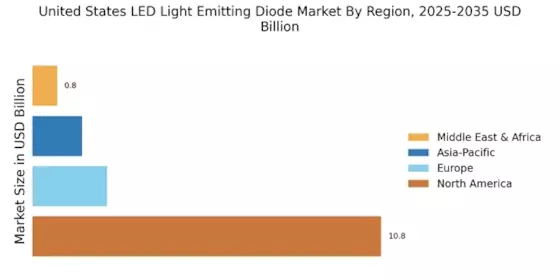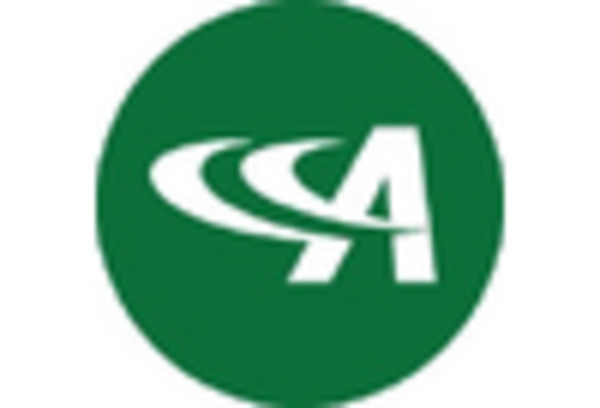Environmental Awareness
Growing environmental awareness among consumers is significantly influencing the United States LED Light Emitting Diode Market. As individuals and organizations become more conscious of their environmental impact, the demand for sustainable products, including LED lighting, is on the rise. LEDs are not only energy-efficient but also have a longer lifespan, which reduces waste and the frequency of replacements. In 2025, it is anticipated that the market will see a surge in demand as consumers prioritize eco-friendly options. This shift in consumer behavior is prompting manufacturers to focus on sustainability in their product offerings, further driving the growth of the LED market.
Energy Efficiency Demand
The increasing demand for energy-efficient lighting solutions is a primary driver for the United States LED Light Emitting Diode Market. As energy costs continue to rise, consumers and businesses alike are seeking alternatives that reduce electricity consumption. LEDs are known for their superior energy efficiency, consuming up to 75% less energy than traditional incandescent bulbs. This shift towards energy-efficient lighting is further supported by various state and federal initiatives aimed at reducing carbon footprints. In 2023, the market for LED lighting in the United States was valued at approximately 10 billion USD, reflecting a growing preference for sustainable lighting solutions. The trend is expected to continue, as more consumers become aware of the long-term cost savings associated with LED technology.
Technological Innovations
Technological advancements play a crucial role in shaping the United States LED Light Emitting Diode Market. Innovations in LED technology, such as the development of smart lighting systems and improved color rendering capabilities, are enhancing the appeal of LEDs. The integration of Internet of Things (IoT) technology into lighting solutions allows for greater control and customization, which is particularly attractive to both residential and commercial users. In 2025, the market is projected to grow at a compound annual growth rate of 12%, driven by these technological innovations. Furthermore, advancements in manufacturing processes are reducing costs and improving the performance of LED products, making them more accessible to a wider audience.
Cost-Effectiveness of LEDs
The cost-effectiveness of LED lighting solutions is a significant driver for the United States LED Light Emitting Diode Market. Although the initial purchase price of LED products may be higher than traditional lighting options, the long-term savings on energy bills and maintenance costs make them a more economical choice. With an average lifespan of 25,000 hours compared to 1,000 hours for incandescent bulbs, LEDs reduce the frequency of replacements, leading to lower overall costs. As of 2025, the market is expected to expand as more consumers recognize the financial benefits associated with LED technology. This cost-effectiveness is likely to encourage widespread adoption across various sectors, including residential, commercial, and industrial applications.
Government Regulations and Incentives
Government regulations and incentives are pivotal in driving the United States LED Light Emitting Diode Market. Various federal and state policies promote the adoption of energy-efficient lighting solutions, including tax credits and rebates for consumers who choose LED products. The Energy Policy Act and other legislative measures encourage manufacturers to produce more efficient lighting options. As of 2025, it is estimated that over 50% of new commercial buildings are equipped with LED lighting, largely due to these supportive regulations. This regulatory environment not only fosters innovation but also creates a favorable market landscape for LED manufacturers, ensuring sustained growth in the industry.

















Leave a Comment